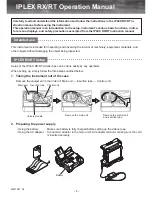
Emerson Process Management GmbH & Co. OHG
3-19
X-STREAM XE
Instruction Manual
HASXEE-IM-HS
10/2012
3
Measuring Principles
3.5 Hydrogen Sulfide (H
2
S) Measurement
3.5
Hydrogen Sulfide (H
2
S) Measurement
H
2
S sensors are electrochemical cells that
operate in the amperometric mode. That is,
they generate a current that is linearly propor-
tional to the content of H
2
S in the sample gas.
Fig. 3-15: H
2
S Sensor Schematic and
Reaction Formulas
1
2
3
4
5
6
1 Working electrode
2 Reference electrode
3 Counter electrode
The working electrode (also called the sensing
electrode) is designed to optimize the oxidation
of Hydrogen Sulfide. This electrode allows
the gas to come in contact with both electro
catalyst and electrolyte to create a threephase
interface of gas, liquid and solid.
The other two electrodes in the cell, the counter
electrode and the reference electrode usually
have a similar chemical composition to the
working electrode.
All three electrodes are stacked parallel to
each other, as illustrated in Fig. 3-15. Three
metal strips connect each electrode to the
three pins outside of the sensor body.
The cell electrolyte provides ionic electrical
contact between the electrodes, usually with
the aid of hydrophilic separators (labelled
“wetting filters” in Fig. 3-15) to allow capillary
transport of the electrolyte which is usually
sulfuric acid between 3 and 7 molarity.
A potentiostatic circuit maintains the potential
of the working electrode at a fixed value with
respect to the reference electrode potential.
The working electrode is the surface where
the electrochemical oxidation of H
2
S occurs. A
high surface area catalyst is used to optimize
the sensor performance, resulting in a high
sensor capacitance: typically 50 mF to 200 mF.
The counter electrode balances the reaction of
the working electrode – if the working electrode
oxidises the gas, then the counter electrode
must reduce some other molecule to generate
an equivalent current, in the opposite sense.
The reference electrode anchors the working
electrode potential to ensure that it is always
working in the correct region of the current-
voltage curve. It is important that the reference
electrode has a stable potential, keeping the
working electrode at the right electrochemical
potential to maintain a constant sensitivity,
good linearity and minimum sensitivity to
interfering gases.
The potentiostatic circuit ensures that the
counter electrode is provided with as much
current as it needs, also maintaining the wor-
king electrode at a fixed potential, irrespective
of how hard it is working.
Working electrode:
Counter electrode:
Overall cell reaction:
4 Wetting filters
5 Electrolyte reservoir
6 Gas diffusion barrier
Summary of Contents for Rosemount X-Stream Series
Page 535: ......
















































